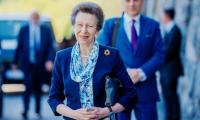The US was the main beneficiary of a new international financial system that emerged after World War II. The World Bank and the International Monetary Fund became the main source of lending to world economies.
The US dollar became the international currency, replacing the old Bretton Wood system of using gold and silver as reserves. The World Bank, IMF and US gradually became the lender of last resort for the entire world and remained so for a long period. But their hegemony is now broken as China has emerged as a giant lender for countries in debt and world economies in distress.
China was non-existent as a main player or lender in 2010, but it gained prominence when it provided loans of about $10 billion to developing countries in 2014. In 2021, it extended almost $40 billion in loans to distressed economies. Even though it still has a long way to go to match the lending profiles of the IMF and the World Bank, China is fast becoming the main lending source for the developing economies of Asia, Africa and other debt-ridden countries. It has extended the scope of emergency financing in recent years by providing almost $240 billion mainly for infrastructure development and balance-of-payments needs.
In 2002, the US lent only $1.5 billion to middle-income countries like Uruguay and extended short-term financing provisions for industrialized countries. Besides, it is a fact that the US has been extending financial support as part of USAID for its strategic interests like the Ukraine war. China however has been providing more financial support to bail out low- and middle-income countries.
The IMF provided financial support of about $69 billion to disturbed economies in 2021 although it provided great support to such countries a year earlier during the Covid-19 pandemic by extending special drawing rights (SDRs) to member countries. It has currently extended its emergency financial support to Sri Lanka, which is passing through a difficult economic phase. Pakistan, however, is still waiting for the resumption of its stalled EFF programme. China has proved helpful in this case and extended financial support through the rollover of SAFE deposits.
There is no doubt that the Belt and Road initiative (BRI) of the Chinese government is a wonderful programme providing an excellent infrastructure network connecting the world. Chinese investment and loans in this regard are effective as these are extended to low-income countries at lower interest rates than those by Western countries. The allegations of debt-trap diplomacy by the West against China are baseless. CPEC is part of the BRI, and China has lent about $900 billion to 151 low-income countries through its commercial efforts to develop and safeguard its geopolitical interests by fulfilling their financial needs.
The Asian Infrastructure Investment Bank (AIIB) is a multilateral development bank created in 2016 on a Chinese initiative to cater the development needs of its 106 member countries. The bank started with an initial capital of $100 billion, which is about two-thirds of the capital of the ADB and half of the World Bank’s. China has maximum shares in the AIIB solely created to support and improve economic and social indicators on a sustainable basis.
The concept of creating the Asian Monetary Fund is also under discussion, which would in effect be a rival to the World Bank and the IMF. China has almost 26 per cent shares in the AIIB, matching the same number of voting rights in overall decision-making. Pakistan is also a beneficiary of the AIIB’s loan facility for its power, energy and infrastructure projects.
China is smartly working on the $5 trillion swap market for foreign investors to hedge their exposure to renminbi (RMB) debt. It will be covering interest rate risk already widening the differential rate between Chinese and US government debt. It will regulate the bond market suffering from outflows due to a differential risk of interest rates. The currency swap agreements are also underway with various countries including Russia, Pakistan, Malaysia, Brazil and others, where trade would take place in their respective currencies to get rid of dollars as reserves.
The Chinese yuan is knocking on the door of the international market to replace dollars as an exchange currency for international trade. Both these initiatives will contribute a lot in addressing the debt burden on poor countries like Sri Lanka and some African countries.
The debt from China is increasing day by day due to highly adjustable interest rates being charged by the state-owned financial institutions for emergency loans. Countries like Pakistan, Nigeria, Laos, Suriname, etc are passing through a difficult phase and are readily getting relatively expensive loans as compared from Chinese commercial banks. That is one of the reasons China is currently getting the status of a lender of the last resort. Chinese loans are normally at five per cent for middle-income countries. The loan remains piling up in the case of Pakistan and other developing countries, as we are always requesting for rollovers.
The Chinese government is wisely extending loans to low- and middle-income countries in RMB/yuan to enhance their trade and businesses, as these countries can only utilize this currency for Chinese goods and services. They are also wisely engaging various countries of the world like Russia, Brazil, Mongolia, Saudi Arabia, Iran, and Pakistan in the currency swap agreements to promote trade in RMB/yuan.
Western countries allege that China will occupy or get control of the assets of these poor countries getting loans from China but it is also a fact that China allowed many countries of the world in 2020 and 2021 to delay their debt repayments by further suspending interest payments.
The decline in the BRI project loans for infrastructure development has recently been noted with concern. As countries like Pakistan face increased threats of default, the request for roll-overs intensified. Strategic interest compels the Chinese government to go ahead with such emergency loans to distressed economies like Sri Lanka, Nigeria and Pakistan.
It is expected that the loan extension facility by Chinese financial institutions and commercial banks to low- and middle-income countries will continue owing to multiple reasons including but not limited to the enhanced role of China in world affairs. China is the last citadel to help support the poor countries of the world that are passing through economic distress and financial crunch.
The writer is a former additional secretary and can be reached at:
hassanbaig2009@gmail.com
University leadership tends to equate success with more academic departments, larger student intakes, and grander...
Kurram remains mired in conflict, with violent tribal rivalries over land claims continuing to destabilise region
Political leaders often make lofty promises to secure political support but fail to deliver once in office
This policy shift diverges significantly from global practices in higher education governance
It’s not just about patching things up after disasters but about building future where we’re better prepared
Apathy of state to constitutional right to education of all children is evident from few alarming facts







